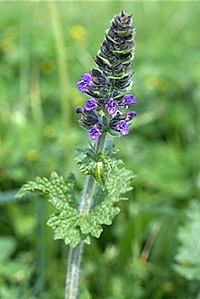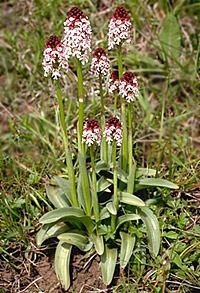
Plant species disappear and reappear
The disappearance and reappearance of species of plants in the Netherlands is a normal phenomenon. In the period from 1981-2000 the number of plants to have disappeared was considerably lower than previously, whereas the number of species rediscovered is much higher. Climate change may be the cause.
19th and 20th centuries

In 1995 Dr Ruud van der Meijden, botanist and former editor of Gorteria, a publication for research into wild flora, and Jacqueline Gillis, from the Nationaal Herbarium Nederland, looked at data from the period between 1840 and 1990. They calculated that in this period 73 plant species disappeared from the Netherlands. Of these, 14 species were rediscovered later in the same period.
Van der Meijden and Gillis expected the number of species that have disappeared in the final decades of the 20th century would be much higher than in the previous period because of the negative effects of man on nature in the period from 1960 to 1970. This proved not to be the case. Since 1920 the rate at which plant species have disappeared has been more or less constant: some 20 in 20 years. They drew the conclusion that the disappearance of such species is a natural process and was not caused by man. Man did have a negative effect on the number of sites where plants have been found and on the number of plants per species.
Follow-up study

In a recent study, Dr Wil Tamis, Centre for Environmental Sciences, and Dr Leni Duistermaat, René van Moorsel, Dr Hans Kruijer and Dr Marco Roos, from the Leiden branch of the National Herbarium of the Netherlands, have reviewed the changes in Dutch flora using the data from FLORBASE, a floristics database, for the period from 1840 to 2000. They show that in this period 87 plant species disappeared, of which 53 have so far not been rediscovered. The total number of species rediscovered in the period investigated amounted to 40, which is 45% of the number of species to have disappeared.
The period 1981-2000

It is striking that in the period from 1981 to 2000 the number of species to have disappeared is almost half that of the previous periods. Also, many species (27) have been rediscovered, twice as many as in earlier periods. There are a number of possible reasons for this. Firstly, planting and sowing could account for it. Many of the plant species that grow wild in the Netherlands can be obtained as seeds or plants. If these seeds are sown in gardens or parks, for instance, they will eventually spread, thus returning the plants to the wild. In this way they can ensure that these species do not disappear from the wild and that the species that have disappeared return.
Other explanations
This hypothesis has proven to be unreliable. A large proportion of the plants that have disappeared (44%) can be bought in seed or plant form as opposed to a smaller percentage of the rediscovered plant species (25% can be obtained as a plant and 30% as seeds). A second possible explanation is that the large number of nature restoration projects have led to the recolonisation of plant species. But this accounts for only some 20% of the additional number of plants rediscovered. A third explanation may lie in a possible increase in the number and intensity of observations; if more people search for plants, more will be found. There are some indications that this does play a role.
Climate

So, what is the cause of the high number of rediscovered plant species between 1981 and 2000 and the low number of plants to have disappeared? The reason probably lies in the shifting of the dispersal areas of the plant species, under the influence of climate change. The researchers also discovered that in the 20th century 157 new species entered the Netherlands, especially in the second half of the century. These new species originate primarily from Central or Southern Europe. It may also be a consequence of a shift in the dispersal areas, under the influence of climate change.
Gorteria
The article by Wil Tamis e.a. appeared in the most recent edition of the journal Gorteria (volume 33, number 4–6). This extra thick issue is dedicated to the importance of Dutch botanist Ruud van der Meijden, author and compiler of the last four editions of Heukels’ Flora van Nederland, for systematic research into Dutch flora.
Order
This issue of Gorteria (Gorteria 33-4–6) can also be bought singly, and can be ordered for € 17.50:
bank account number. 56.61.76.254,
in the name of: Nationaal Herbarium Nederland, Leiden
mentioning ‘Ruud van der Meijden’
